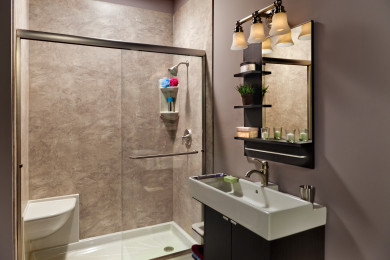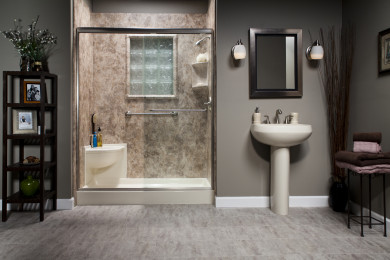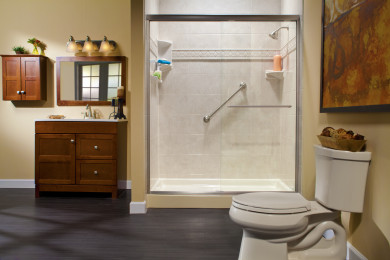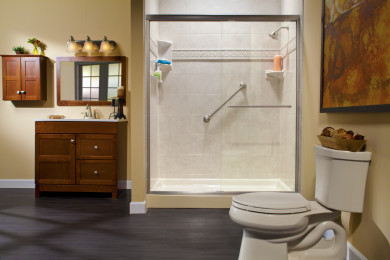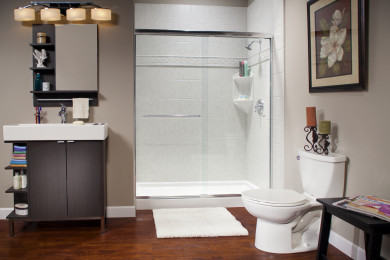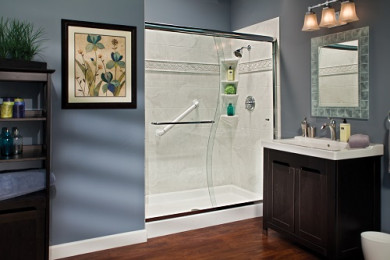April 15, 2024
How to Make Your Bathroom Handicap Accessible
November 3, 2023
The bathroom is one of the most important rooms in any home, and it should be a place where everyone can access and use its facilities comfortably and safely. Making your bathroom handicap accessible is not just a matter of convenience; it’s about ensuring inclusivity for all members of your household and visitors. Here is a guide on how to make your bathroom handicap accessible while prioritizing comfort and safety.
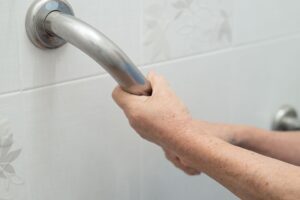
Start with Planning
Before making any physical changes, it’s essential to plan your bathroom renovation carefully. Consider the specific needs of the person for whom you’re making the bathroom accessible. Take measurements and create a detailed floor plan to ensure that the space will accommodate the necessary modifications.
Widen Doorways
Ensure that the bathroom doorways are wide enough to accommodate a wheelchair or mobility device. Standard doorways are typically 30 inches wide, but expanding them to 36 inches or more is ideal for better accessibility.
Install Grab Bars
Grab bars are crucial for providing stability and support. Install them near the toilet, shower, and bathtub. Make sure they are securely anchored to the wall and able to support the weight of the person using them.
Create a Curbless Shower
A curbless or roll-in shower eliminates the need to step over a barrier, making it easier for someone with limited mobility to access the shower safely. Install a sloped floor with a linear drain to ensure proper water drainage.
Choose Slip-Resistant Flooring
Select flooring materials that provide traction and reduce the risk of slips and falls. Options like non-slip tiles, textured vinyl, or rubber flooring can help create a safer bathroom environment.
Lower Countertops and Sinks
Lowering countertops and sinks to a comfortable height for wheelchair users is essential. Wall-mounted sinks can provide the necessary clearance underneath for wheelchairs.
Install a Comfort-Height Toilet
A comfort-height toilet is taller than standard toilets, making it easier for people with mobility issues to sit down and stand up. It’s a small modification that can make a big difference.
Consider Faucet Design
Opt for lever-style or touchless faucets that are easier to operate for individuals with limited dexterity. These faucets are more accessible than traditional knob-style faucets.
Adequate Lighting
Proper lighting is essential in any bathroom, but it’s especially critical in an accessible bathroom. Ensure that the bathroom is well-lit, with switches located at a convenient height for all users.
Handheld Showerhead
Install a handheld showerhead with a long hose that can be easily reached and adjusted by someone sitting or standing. This provides flexibility for different users’ needs.
Accessible Storage
Consider accessible storage solutions, such as open shelves or cabinets with pull-out trays, to ensure that personal care items and toiletries are within reach for everyone.
Non-Slip Bath Mats
Place non-slip bathmats inside and outside the shower or bathtub to prevent accidents. These mats provide an extra layer of safety when entering and exiting the wet area.
Consult a Professional
When planning and implementing these modifications, it’s advisable to consult with a professional contractor experienced in accessible bathroom design, like The Bath Doctor. We have over 40 years of experience and can provide expert guidance to carefully and meticulously create a bathroom accessible to everyone and adhere to local building codes and regulations. Contact us now to get started.


